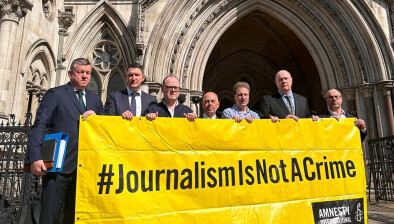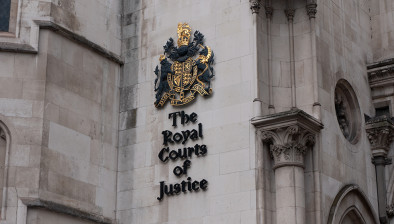NI: Court of Appeal: Ombudsman overstepped mark but public statement upheld
The Court of Appeal in Northern Ireland has held that comments made by the Police Ombudsman for Northern Ireland in his public statement about the Loughinisland massacre “overstepped the mark” by amounting to findings that members of the police force had committed criminal offences.

About this case:
- Judgment:
- Court:Court of Appeal
- Judge:Sir Declan Morgan
The court nevertheless refused to strike down the public statement as it accepted “it would have been appropriate for the Ombudsman to acknowledge that the matters uncovered by him were very largely what the families claimed constituted collusive behaviour”.
Background
In June 1994, six Catholic men were murdered in an attack on a village pub in Loughlinisland, County Down. The offenders were not intercepted and were never apprehended. The police investigation was transferred to the Legacy Investigation Branch of the PSNI in 2014. The investigations have not led to the apprehension of those responsible.
The families raised concerns about the circumstances of the attack and subsequent police investigations with the Ombudsman in 2001, and they lodged a formal complaint in 2006 raising concern about the circumstances of the attack and subsequent police investigations. It concerned the alleged failure by police to conduct an effective investigation of the murders, including a failure to keep the bereaved families updated as to progress in the enquiry; alleged failure of the police investigation to discharge the state’s duties as required by Article 2 of the European Convention on Human Rights as incorporated by Schedule 1 of the Human Rights Act 1998; and alleged collusion between the RUC and those responsible for the murders.
The Ombudsman published a formal statement in June 2011. The families were dissatisfied and issued judicial review proceedings to quash it. By consent that statement was quashed in December 2012.
The families then engaged with a newly appointed Ombudsman.
The weapon used in the murders was a VZ58 assault rifle which was part of a consignment of weapons imported by loyalists during 1987/88. It was alleged that the RUC were aware of the planned importation and colluded with loyalists by either facilitating the purchase and importation or failing to take appropriate and effective steps to disrupt the importation.
The Ombudsman made a public statement pursuant to the Police (Northern Ireland) Act 1998 s.62. The Ombudsman stated that failures to bring the murderers to justice could not be explained solely by a failure or otherwise of investigative actions.
Thomas Hawthorne and Raymond White, retired police officers, initiated judicial review proceedings in August 2016 to quash the public statement on the basis that the report exceeded the Ombudsman’s statutory powers. Mr Hawthorne claimed that he was denied the procedural fairness protections guaranteed to him at common law.
Mr Justice Bernard McCloskey gave judgment in December 2017. He reviewed the public statement and considered that it contained a determination of negligence in relation to Mr Hawthorne and did not expressly exclude him from the allegation of collusion. Mr Hawthorne was given the opportunity to comment in advance of publication on only a single, isolated element of the public statement concerning the storage and disposal of the suspected murder vehicle and the simultaneous loss of a significant exhibit. There was no reference to Mr Hawthorne’s representations that there should be a focused search for further relevant documentary evidence. There was an inadequate and inaccurate portrayal of his defence in the report and no evidence that his defence was believed. In those circumstances the Public Statement was vitiated by procedural unfairness.
An application for recusal was then made prior to a remedies hearing. The judge recused himself and directed that it should be heard before a different judge.
The matter then came before Ms Justice Siobhan Keegan. It was argued that the Ombudsman acted ultra vires in coming to conclusions as to whether criminal offences had been committed by police officers as opposed to making recommendations to the appropriate authorities in relation to the same.
It was submitted that the Ombudsman had no authority to issue a report on matters that did not relate to the exercise of his powers or as to decisions or determinations that he was lawfully permitted to arrive at. It was said that he wrongfully employed the making of a public statement pursuant to the Police (Northern Ireland) Act 1998 s.62 “for the purposes of making a comment upon the Royal Ulster Constabulary George Cross as a body corporate.”
The judge analysed R (Chief Constable of West Yorkshire) v IPCC [2015] PTSR 72 which was advanced by Mr White and Mr Hawthorne as demonstrating a narrow approach to the Ombudman’s discretion.
The Ombudsman relied on R v Parliamentary Commissioner ex p Dyer [1994] 1 All ER 375 where Lord Justice Simon Brown referred to the width of the discretion available to the Commissioner. However, the Commissioner was given express power where it appeared to the Commissioner that injustice had been caused in consequence of maladministration to so find. The provisions bear no relationship to the “carefully crafted allocation of responsibility” set out in the 1998 Act and does not relate to the Ombudsman’s powers under this legislation.
The judge rejected the retired police officers’ case that the Ombudsman exceeded his authority and refused to quash the report.
Mr Hawthorne and Mr White appealed to the Court of Appeal.
The Lord Chief Justice Sir Declan Morgan, Lord Justice Stephens and Sir Donnell Deeny agreed with Ms Justice Keegan that the requirement in the 1998 Act that the Ombudsman “shall exercise the powers in such manner and to such extent as appear to be best calculated to secure the confidence of the public and the members of the police force in the system is a significant material consideration in deciding to issue a public statement and the terms in which it should be crafted”. The court said “that the statute itself has sought to set out a framework within which the confidence of both the public and the police force should be secured”.
Conclusion
It was held that the Ombudsman “overstepped the mark by amounting to findings of criminal offences by members of the police force.” The court said it was clear from the 1998 Act that the principal role of the Ombudsman is investigatory. The judges found that the Ombudsman does not have the power to assert a conclusion in respect of criminal offences or disciplinary misconduct by police officers.
The court said that they “do not dissent” from Ms Justice Keegan’s view that she was not minded “to step into the territory of critiquing modes of expression” in exercising her supervisory jurisdiction. However, they found that the “emphatic conclusions reached by the Ombudsman” went “beyond mere modes of expression and exceed his powers.”
Nevertheless, the court refused to strike down the public statement as the judges accepted that “it would have been appropriate for the Ombudsman to acknowledge that the matters uncovered by him were very largely what the families claimed constituted collusive behaviour”.







